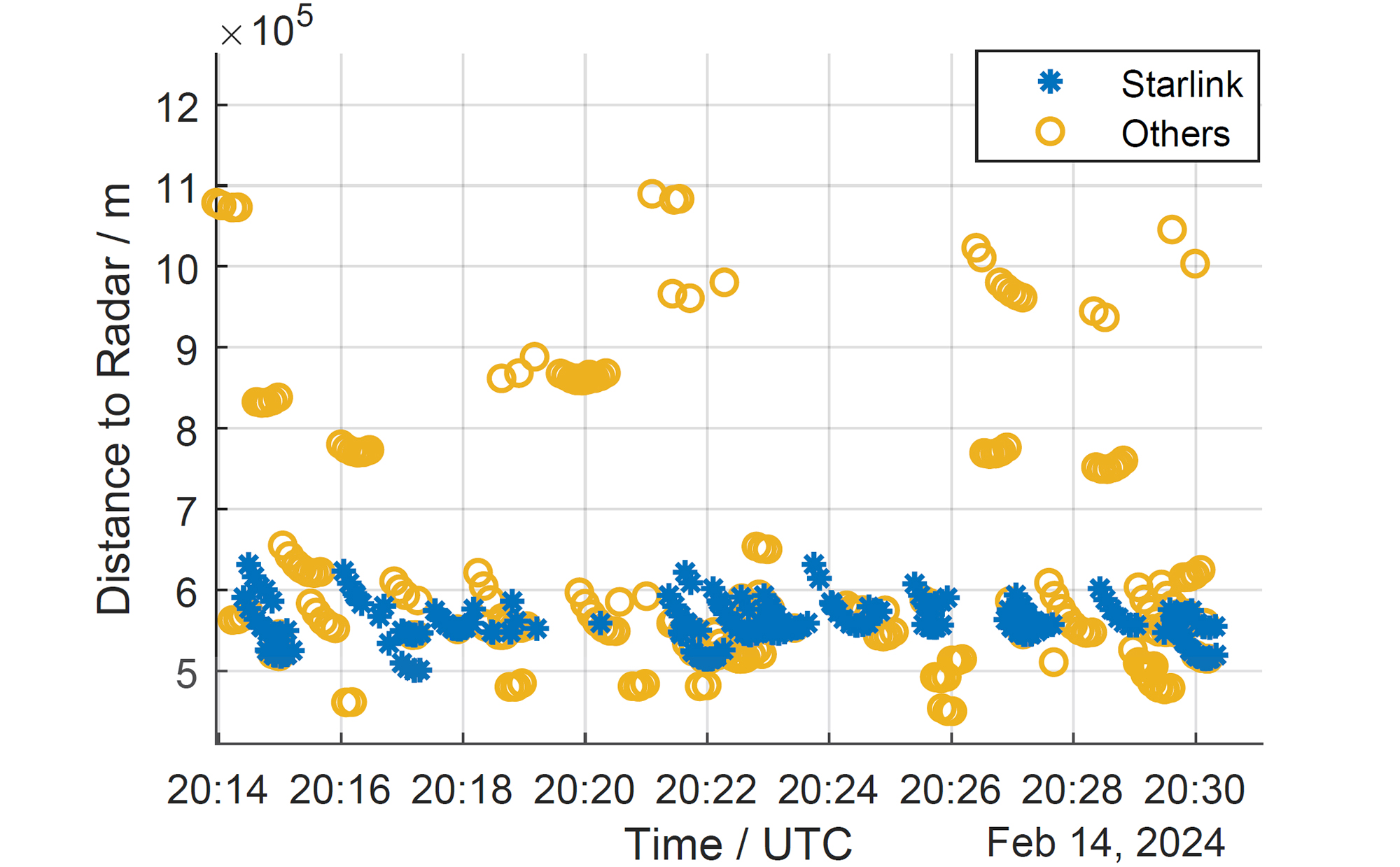GESTRA reliably detects Starlink satellites

Abundant in number, similar in size and orbital data, the Starlink satellites are ideal test objects for the space surveillance radar GESTRA. The radar's tracking mode can be tested almost anytime with the Starlink satellites. With success: GESTRA reliably detects the satellites.
Developed and built by the Fraunhofer Institute for High Frequency Physics and Radar Techniques (FHR) on behalf of the German Aerospace Center's (DLR) Space Agency, the space surveillance radar GESTRA (German Experimental Space Surveillance and Tracking Radar) is in its final phase of verification after an intensive and successful testing phase. The facility is located on Schmidtenhöhe near Koblenz.
Testing includes both the search mode, where a region in space is monitored over a specific period, and the tracking mode, where a specific object, whose orbital data are roughly known, is tracked in orbit. The investigation determines whether the object can be detected and if the estimated parameters such as distance to the radar, changes in distance, and direction match. The Starlink satellites are particularly useful to the researchers at Fraunhofer FHR when testing the tracking mode of the globally unique system: The number of satellites of the same size in similar orbits means that tests can be carried out at any time and as required. In contrast, other individual objects do not regularly provide suitable flyovers, making tests require more planning. The Starlink satellites, however, provide almost continuous flyovers observable by GESTRA.
Furthermore, the researchers at Fraunhofer FHR take advantage of another characteristic of the Starlink satellites: during tests, it was observed that when they are precisely at the zenith, they exhibit a very large radar cross-section (RCS), or in simpler terms, a very strong echo. In this case, special caution is necessary to avoid additional false detections. Again, the regularity of the Starlink satellites makes them particularly suitable as test examples.
GESTRA contributes to space situational awareness
In low Earth orbit, several thousand satellites orbit, but this area also contains tens of thousands of pieces of space debris, totaling more than 10,000 tons of material. Most of it is located in low orbits up to 2000 kilometers high, in the so-called "Low Earth Orbit" (LEO). A collision with utilized infrastructure in space is thus very likely. Even the International Space Station (ISS) in its orbit at around 400 kilometers is affected by this. To minimize collisions as much as possible, reliable space situational awareness data provided by radar systems like GESTRA are continuously needed.